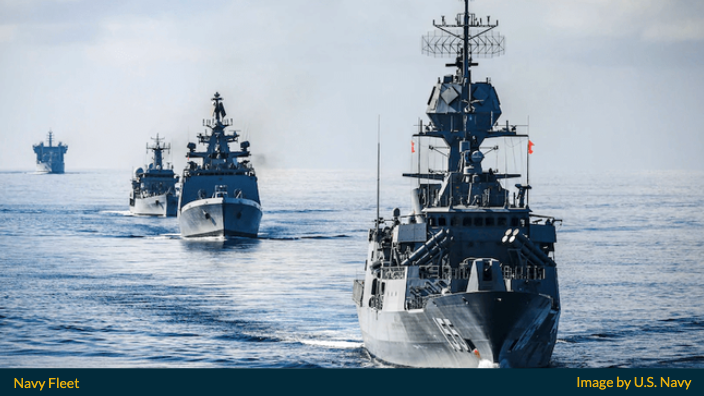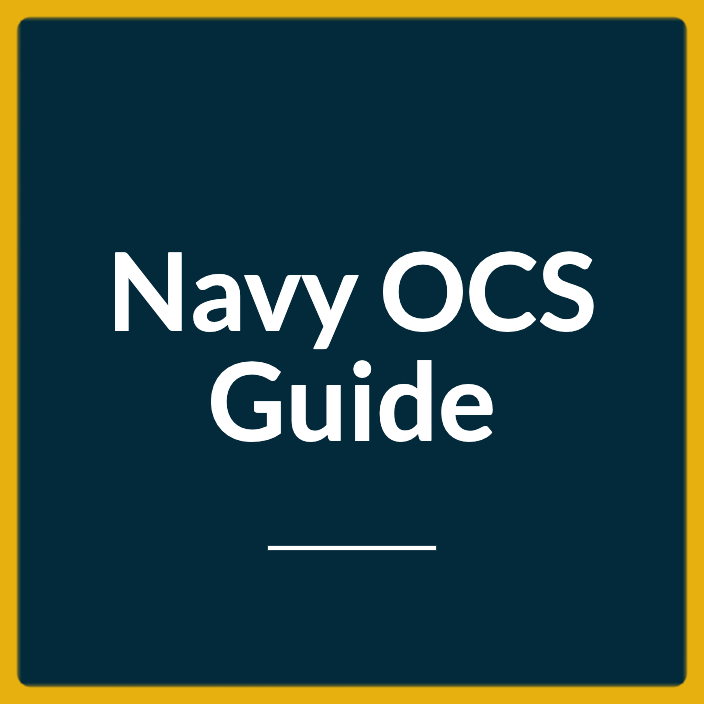Last Updated on August 30, 2023
The term “Warrant Officer” is often associated with the military, but the specifics of this type of rank are still a mystery to many. What exactly is a warrant officer, and does the U.S. Navy have them?
In this article, we will explore the history of Warrant Officers in the Navy, what their role entails, as well as how to become one.
From understanding the qualifications needed to gain access to this exclusive rank, to learning about the leadership skills developed through service in this position, read on for a comprehensive look at all you need to know about warrant officers in the Navy.
What Are Warrant Officers?
Warrant officers are specialized officers in the U.S. Navy who possess a unique set of skills and qualifications that set them apart from other service members. They serve as technical experts in their specific field and have direct influence over the operations of their respective unit.

In addition, warrant officers must display exemplary leadership skills and be highly knowledgeable in their field of expertise, such as engineering or information systems management. This knowledge is critical for making sound decisions in important matters related to their unit’s operations.
While they may not hold command positions, warrant officers can provide invaluable guidance to both junior and senior personnel alike.
Chief Warrant Officers (CWO) are the highest-ranking non-commissioned personnel in the Navy and serve as mentors to all other Sailors within their rank structure. They have a higher rank than enlisted personnel, but a lower rank than commissioned officers.
They also have significant influence over military policy making within the organization and often act as liaisons between upper-level personnel and those on the ground. They also act as advisors to commissioned officers on military tactics and operations, and serve as mentors for junior enlisted personnel.
Warrant officers play an integral role in the Navy’s operational success; they provide essential technical expertise, leadership, and guidance to those under their command. To qualify for this position requires a great deal of experience, knowledge, skill, dedication—all qualities that make up a successful naval officer.
The U.S. Navy’s warrant officers are an invaluable asset to the organization; their knowledge, skill, and dedication make them an essential part of the Navy’s success and mission accomplishment. But how does one become a warrant officer in the Navy? Find out in our next section!
Does The Navy Have Warrant Officers?
Yes, the U.S. Navy has warrant officers. Warrant officers are specialized officers in the Navy who possess a set of skills and qualifications that make them uniquely qualified to serve as technical experts in their respective field of expertise.
The Navy uses warrant officers to fill important roles throughout the service, including those in avionics and engineering. They also perform in administrative roles, such as supply and logistics. Warrant officers are appointed after they have shown their expertise and knowledge in their chosen field.
The promotion of enlisted personnel to a warrant officer requires meeting the rigorous qualifications of each rank.
Once promoted to a warrant officer, they take on positions of authority and serve as technical experts, teachers, guides, and mentors to their subordinates. The U.S. Navy relies heavily on its warrant officers to ensure operational success and mission accomplishment.
History Of Warrant Officers In The Navy
Warrant officers have served in the U.S. Navy since the American Revolutionary War to recognize and reward technical proficiency and experience. During World War I, the U.S. Navy established the rank of Chief Warrant Officer (CWO) to further recognize their service and provide more opportunities for advancement.
They expanded the position during World War II, with an increasing number of warrant officers serving in specialized roles such as navigation, engineering, communications, cryptology, and aviation.
Today, warrant officers continue to play an essential role in ensuring operational success for the Navy by providing expertise in their respective fields as well as mentoring other warrant officers within their rank structure. The Secretary of the Navy appoints them through a competitive selection process.
We should not overlook the invaluable contribution of Navy Warrant Officers to the success of naval operations. Their expertise, leadership, and dedication make them an invaluable asset to the U.S. Navy. With this in mind, let’s look at the early years of the U.S. Navy and explore how it has evolved.
Early Years of the U.S. Navy
The U.S. Navy has a long and storied history, dating back to its inception in 1775, when the Continental Congress established the Continental Navy for use during the American Revolutionary War. The original mission of the navy was to protect merchant ships from British warships, as well as to provide support for other military operations.
Over time, the U.S. Navy has grown and evolved to meet the needs of an ever-changing world. Early naval operations included coastal patrols, amphibious landings, and blockades. During World War I, advances in technology allowed for increased air power, submarine warfare, and convoy tactics, which enabled naval forces to defend against German U-boats effectively and protect Allied supply lines.
The U.S. Navy then entered World War II with an expanded fleet that helped defeat Japan’s Combined Fleet at Midway in 1942 and provided critical help in winning battles in both Europe and the Pacific Theater. In subsequent decades, the Navy has continued to adapt its tactics and strategies to meet new challenges on land or the sea.
Today, it is one of the most technologically advanced militaries in existence with a wide range of capabilities that makes it an essential part of a national security strategy.
Development of the Modern Naval Officer Ranks
The modern naval officer ranks have come a long way from the early days of the U.S. Navy. In the beginning, they divided commissioned officers into three ranks: Captain, Lieutenant, and Midshipman. The Navy has added new ranks over time to better meet the ever-changing needs.
In 1883, Congress allowed the introduction of Warrant Officers to serve as technical experts for specialized roles such as engineers, gunners, pilots, and navigators. By 1899, it had expanded these positions to include chief warrant officers who served in administrative and command positions within their particular areas of expertise.
Today’s U.S. Navy has a sophisticated system of ranks that includes twelve commissioned officer grades (from Ensign to Admiral) as well as six Chief Warrant Officer grades (from Chief Warrant Officer Two to Chief Warrant Officer Five). The Secretary of the Navy appoints the Warrant Officers by warrant.
Overall, this system ensures that all personnel receive recognition for their service and contributes to an effective chain of command structure, which is essential for successful operations at sea or on land.
Establishment of the Warrant Officer Program in 1942
The establishment of the Warrant Officer program in 1942 was a major milestone in the history of the United States Navy. This program provided for the creation of a specialized officer corps, which could bring its expertise to bear in critical operational roles. The Secretary of the Navy warranted the appointment of ranks from Chief Warrant Officer Two up to Chief Warrant Officer Five in this new corps.
This new corps began with just six officers, but quickly grew in number and importance as World War II progressed and the need for technical experts increased. These officers served as pilots, navigators, gunners, engineers and administrators, bringing their knowledge to bear on crucial missions throughout the war effort.
The success of this program has endured over time and today’s U.S. Navy continues to benefit from having a dedicated corps of Warrant Officers whose expertise is essential to successful operations both at sea and on land.
Role of a Naval Warrant Officer
The role of a Naval Warrant Officer is to provide specialized technical expertise and support to a wide range of Navy operations. Warrant from the Secretary of the Navy appoints these officers to their positions, and typically serve in roles such as pilots, navigators, gunners, engineers and administrators.
Naval Warrant Officers bring a unique set of skills and knowledge to every mission they undertake. They have extensive training in the most advanced technologies available to the Navy and can apply this knowledge to new tasks quickly and effectively. As a result, they often take on leadership roles in complex operations that require precise coordination between multiple teams.
Warrant Officers also serve an important role in mentoring junior officers and helping them develop their own technical abilities. Their experience allows them to provide valuable guidance on how best to tackle complex problems or use new technologies while still adhering to regulations.
In addition, Naval Warrant Officers act as liaisons between senior officers and enlisted personnel, ensuring that all members of the command understand their duties and can work together efficiently and harmoniously towards common goals.
Naval Warrant Officers are invaluable assets to any Navy operation, providing a wealth of experience and technical know-how that can make the difference between success and failure. And if you think that’s impressive, just wait until you hear about the different jobs that require this prestigious rank!
Types of Jobs That Require A Warrant Officer Rank
Naval Warrant Officers are required for a wide range of jobs across the Navy, including such diverse roles as piloting aircraft, directing ship navigation, managing engineering operations and providing administrative support. Experienced officers with a warrant officer rank must provide the specialized expertise for these complex positions.
Warrant Officer jobs are always challenging, but they come with their own unique rewards. Pilots, for example, often fly some of the most advanced aircraft in the world and take part in important missions that require precision and skill.
Navigators must use their knowledge of mathematics and physics to guide ships safely through waters around the globe while managing any potential hazards along the way. Engineers must stay abreast of new technologies so that they can make sure ships and other vessels remain in top condition.
These tasks may not be as flashy as some other jobs associated with Naval Warrant Officers, but they’re essential for maintaining a well-oiled machine in Navy operations.
Responsibilities of a Naval Warrant Officer
Naval Warrant Officers handle a wide range of duties, including piloting aircraft, navigating vessels and managing engineering operations. They use their specialized expertise to ensure that they perform all tasks safely and efficiently. They must be familiar with the latest technologies and regulations to make sure they’re up-to-date on the best practices for their specific job roles.
They also have to stay in close contact with personnel to ensure everyone is aware of any changes in orders or regulations. This communication is key to making sure everyone is performing their jobs correctly and safely. These officers may also have to act as mediators between personnel when there’s conflict or disagreements, so that everyone can remain focused on the mission at hand.
Naval Warrant Officers must be able to take command of situations quickly to avoid any potential hazards and not waste time. Their leadership skills will come in handy during these times and for motivating personnel so that they can work together effectively as a team. Ultimately, this dedication keeps everyone safe while completing the Navy’s important tasks.
Leadership Skills Developed Through Service as a Naval Warrant Officer
Naval Warrant Officers are highly experienced professionals who are essential to the success of operations within the Navy. This specialized field requires a great deal of leadership, technical expertise, and interpersonal skills.
During their time as a warrant officer, many individuals develop deep knowledge and experience in areas such as communications, logistics, engineering, navigation, and aviation. Besides these specialties, warrant officers also develop strong leadership capabilities that will serve them throughout their careers.
Leadership development begins right away with the warrant officer’s initial assignment. During this time, they learn how to manage personnel effectively while staying on task, dealing with conflicts between personnel when necessary, and motivating those around them to work together as a cohesive unit.
As they progress through their career, they will get more opportunities to hone and refine their leadership skills. These could include leading large groups of personnel in various tasks or taking charge and making quick decisions during times of crisis in order to keep everyone safe.
At all levels of service, Naval Warrant Officers show a commitment to excellence that is invaluable for any organization or team. With the knowledge gained from years of service combined with finely tuned leadership abilities, these officers are an essential asset for any mission or goal faced by the Navy today.
Becoming A Navy Warrant Officer
Becoming a Navy Warrant Officer requires dedication to the highest levels of service and leadership. The first step is to get a commission as an officer in the United States Navy. Upon successful completion of this process, applicants are eligible to apply for the position of warrant officer.
The application process is rigorous and includes an extensive background check, physical fitness tests, and interviews with senior officers. Candidates must also pass a series of written exams that assess their technical knowledge and understanding of naval operations.
Those who successfully complete these steps will attend a period of training where they will learn about topics such as navigation, communications, engineering, logistics, aviation, and more.
Warrant officers serve as leaders within the Navy’s ranks and must show exemplary conduct at all times. They must possess strong problem-solving skills, be able to work independently or in teams, and maintain high professionalism when interacting with personnel from all branches of the military.
With this combination of traits and abilities, warrant officers are essential for ensuring success during any mission faced by the United States Navy today.
Becoming a Navy Warrant Officer is an incredibly rewarding experience that requires dedication to the highest levels of service and leadership. With your commitment and hard work, you can become part of an elite group of individuals who are essential for ensuring success during any mission faced by the United States Navy.
Ready to find out how to become a Navy Warrant Officer? Read on!
Application Process
The Navy’s selection process for Chief Warrant Officers (CWOs) identifies those outstanding enlisted personnel who have a proven track record of excellence and dedication. Annually, a board of officers assesses the qualifications of CWO candidates, considering the duration of the individual’s service in their technical area.
To be eligible, enlisted personnel must have at least twelve, but only 24 years of service in the Navy. Successful applicants receive an appointment either as Chief Warrant Officer Two (CWO2) or as Chief Warrant Officer Three (CWO3), depending on their current pay grade. The grade of Chief Warrant Officer One is no longer in use, so all CWOs currently receive one of these two appointments upon selection.
The requirements do not include a college degree but most successful applicants have degrees, anyway.
The Chief Warrant Officer program provides experienced senior enlisted members with an opportunity to serve in high-ranking leadership positions within the Navy. As part of the selection process, candidates must possess special qualifications that make them stand out from other sailors and show that they have what it takes to excel in the role of a leader within the United States Navy.
The application process for becoming a warrant officer in the United States Navy begins with an initial evaluation of qualifications. After passing the physical and written exams, applicants must then submit documents such as their birth certificate, Social Security number, and official transcripts from any educational institution they attended.
Upon completion of this step, the applicant has to go through an extensive background check to verify the validity of all information given. This includes inquiries into any past criminal records or military experience that may apply to the position applied for.
The candidate will have to complete these steps successfully before they go through the final interview to decide whether they qualify as a Navy Warrant Officer.
A board of officers accepts and evaluates applications for CWO positions each year. Successful candidates receive either the CWO2 or CWO3 designation based on their current pay grade, with the former grade of CWO1 no longer being used.
Those who pass the selection board will find themselves amongst some of the most respected naval personnel, joining a unique line of excellence and distinction within this storied branch.


